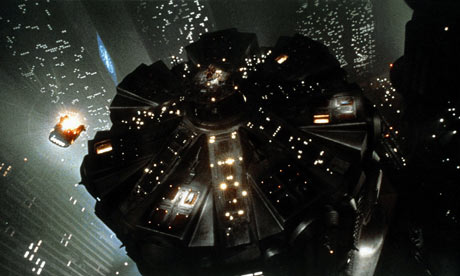A retrospective
As the Royal Institute of British Architects (RIBA) celebrates its 175th anniversary, a season of films explores the most distinctive and influential examples of architecture in film. Jonathan Glancey names his top five, which include Fritz Lang's German masterpiece Metropolis and Stanley Kubrick's Cold War satire Dr. Strangelove. Perhaps inevitably, Ridley Scott's dark and dystopian science fiction film, Blade Runner, also receives a worthy mention:
Metropolis translated into another futuristic dystopia, this time a vision of LA in 2019. The opening shots, as the camera pans over a 700-storey skyscraper and the sky glows with industrial smoke, fire and acid rain, is as magnificent as it is disturbing. It's another interpretation of the Tower of Babel, of course; this time the headquarters of the company that makes the humanoid "replicants" that do the dirty work for human beings.More:
Scott says that the sets were conjured from a variety of haunting images: Edward Hopper's painting Nighthawks, the skyline of Hong Kong at night, the fiery industrial landscape of Tyneside and Teesside of Scott's childhood, the French comicbook Métal Hurlant [Heavy Metal], and, quite clearly, Metropolis. Scott places these nightmarish exteriors in architectural contrast to the theatrical, spooky inside of LA's real-life Bradbury Building, designed by George Wyman in 1893, which is cast as the headquarters' interiors. Significantly, the original architect claimed that his style was influenced by Edward Bellamy's book, Looking Backward (1887) – itself a work of utopian sci-fi. Wyman admired the passage in which Bellamy describes a typical commercial building of the future as a "vast hall full of light, received not alone from the windows on all sides, but from the dome, the point of which was a hundred feet above". [Read More]



